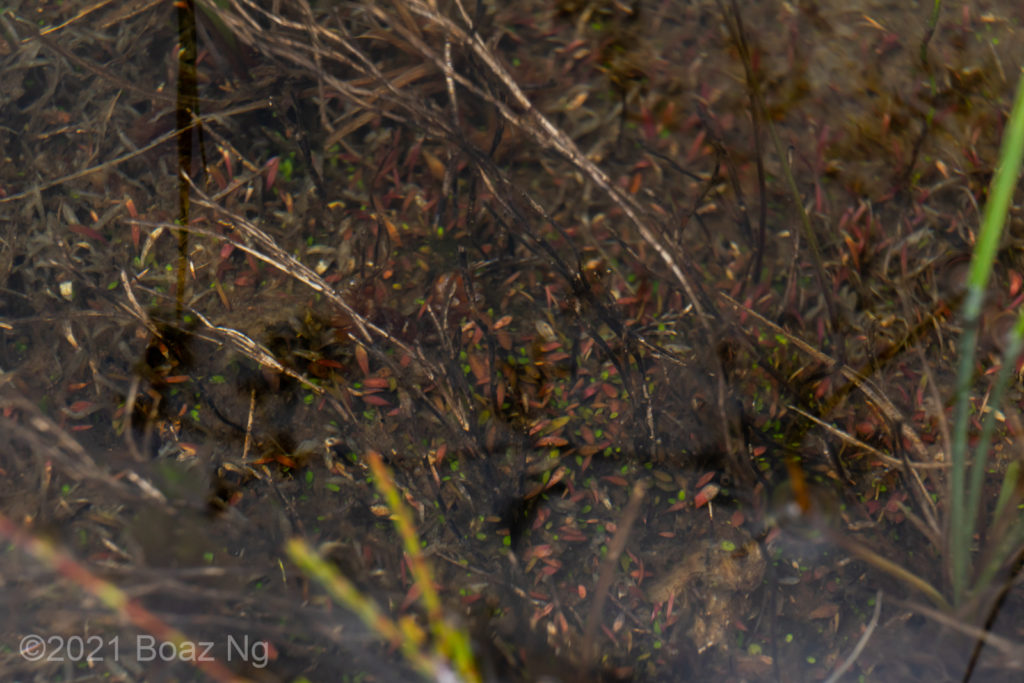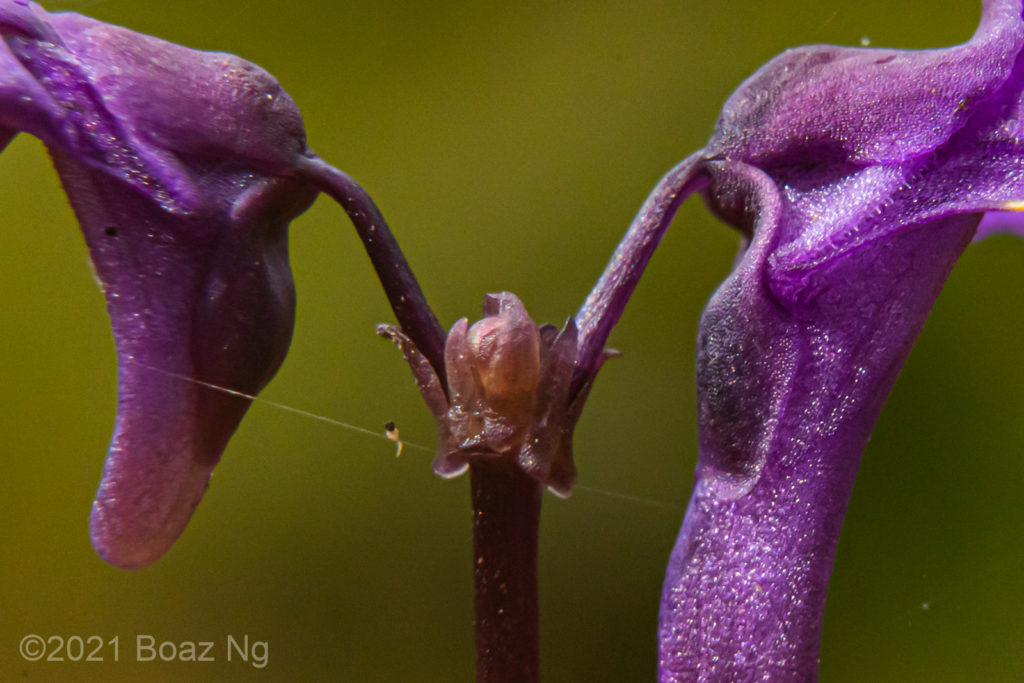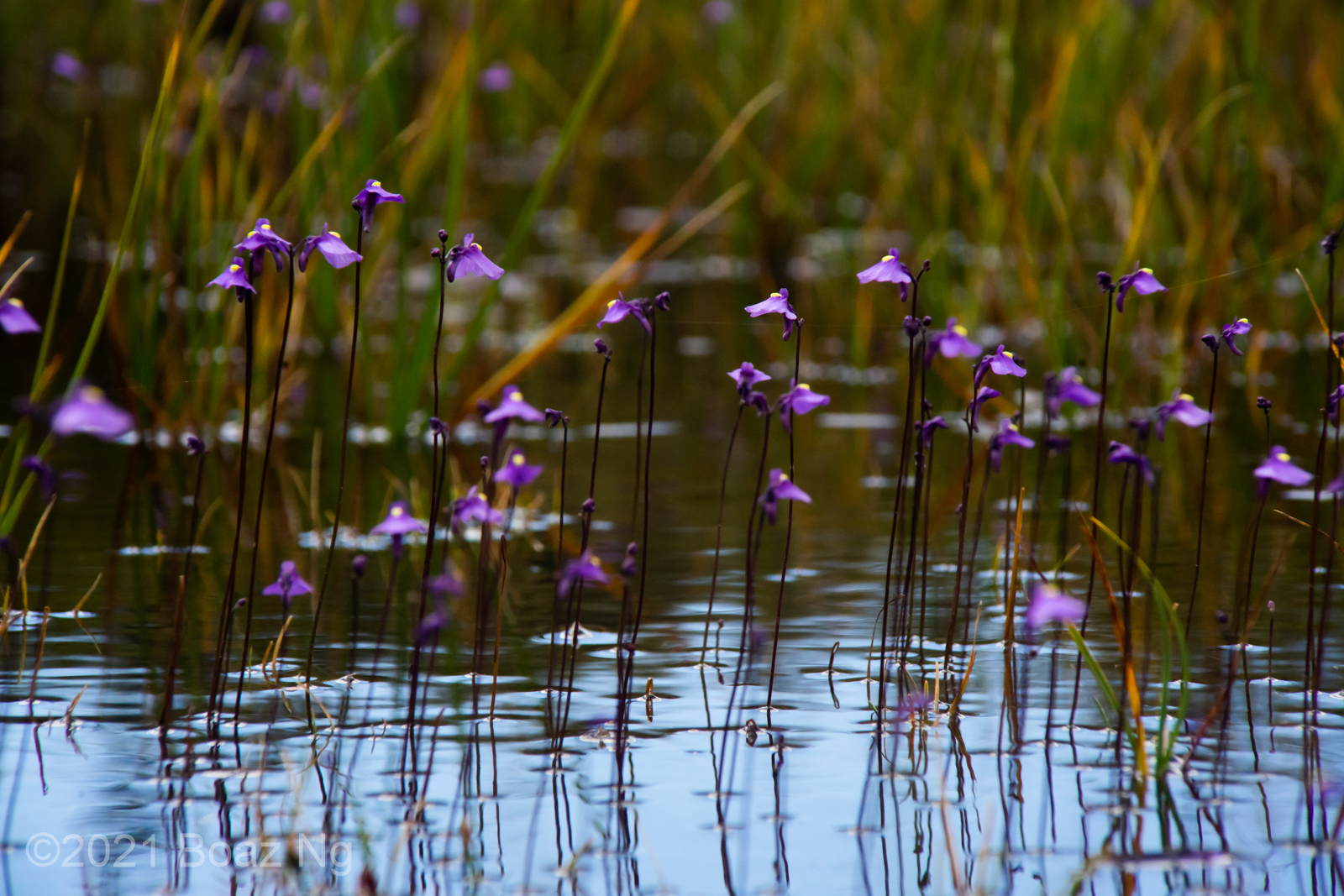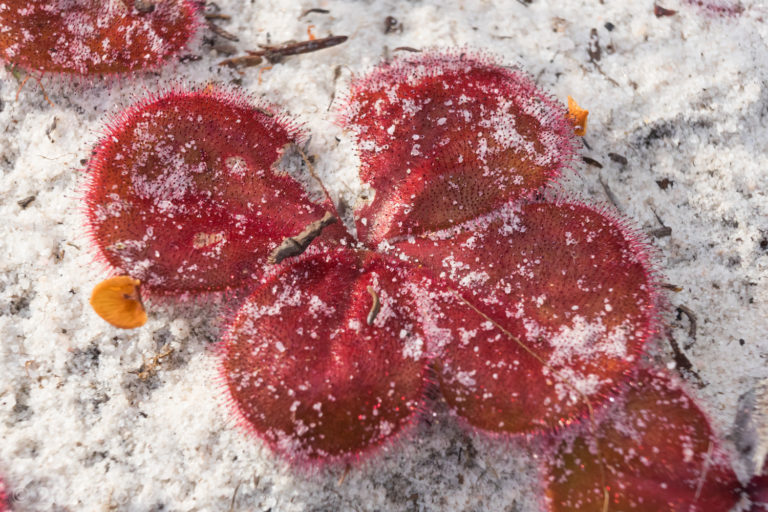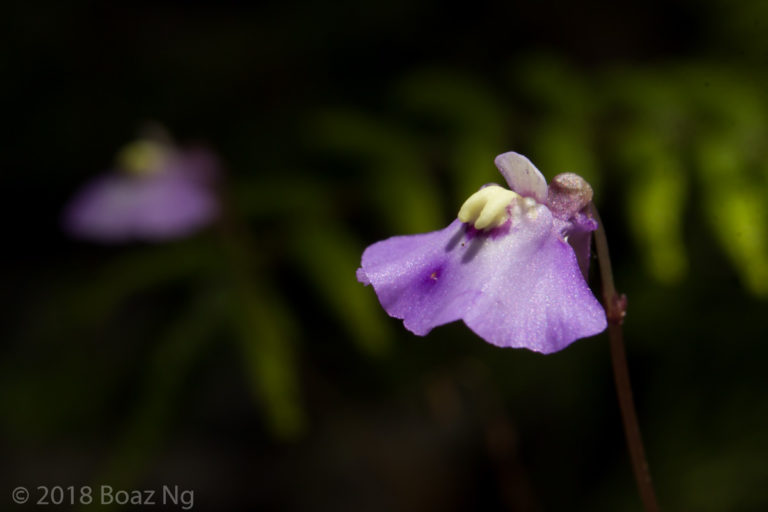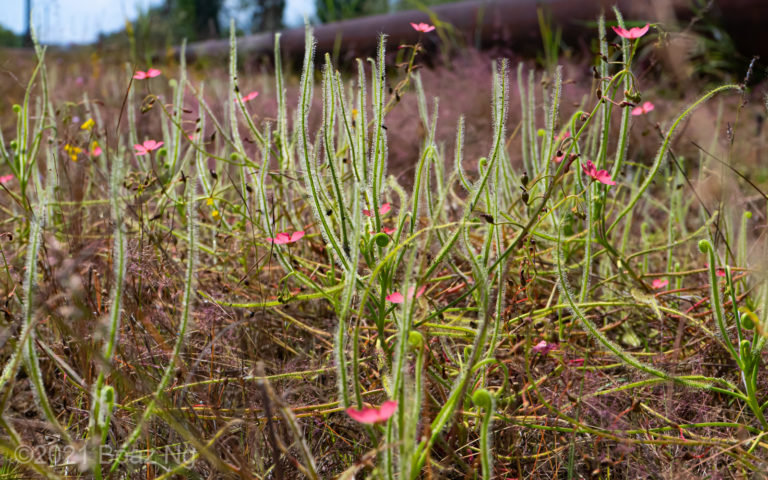Utricularia dichotoma subsp. dichotoma is one of eight subspecies within the U. dichotoma species complex identified by Jobson et al. 2020. The taxon is mainly distributed in highland regions of Tasmania, Victoria and New South Wales. I observed the taxon on Mount Buffalo, in the high country of Victoria
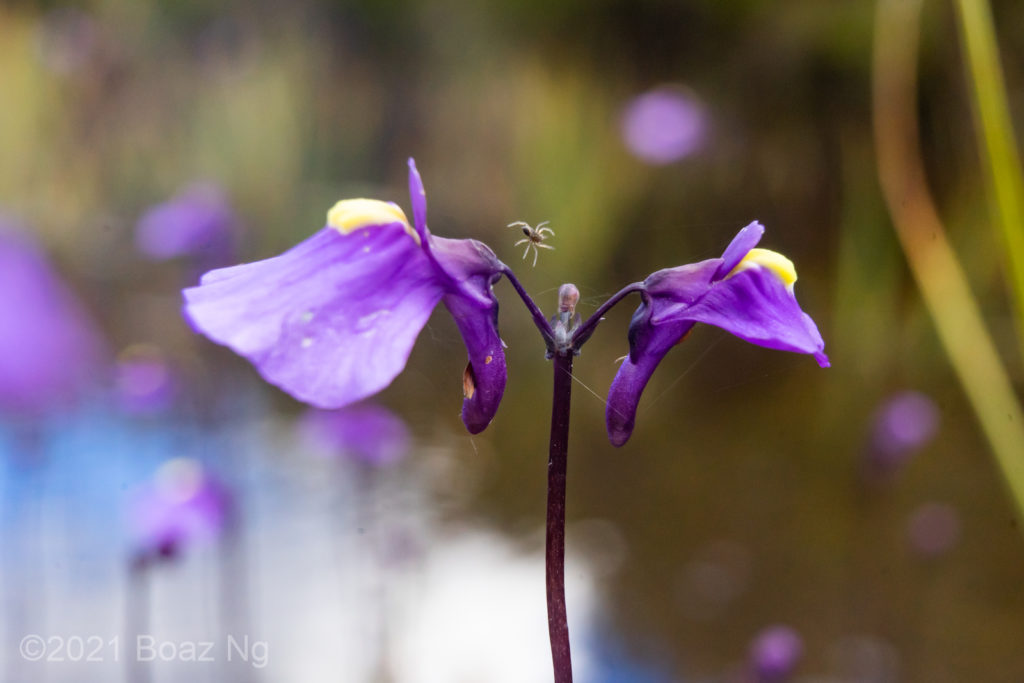
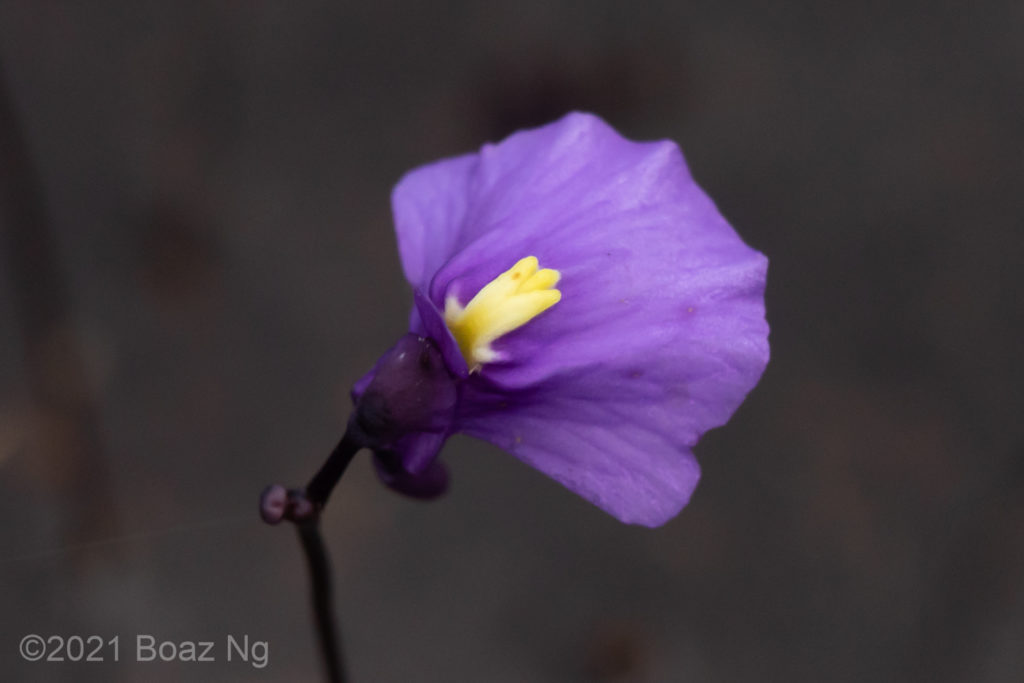
Utricularia dichotoma subsp. dichotoma is mainly noticed through its purple blooms, which often appear en mass. The upper corolla lip does not have darker veins. The lower corolla lip is gently flared with a palate that features 2-3 prominent yellow ridges. These yellow ridges are usually flanked by purple ‘shoulder-like’ bumps. The corolla spur is curved, rounded at the apex and generally shorter in length than the lower corolla lipThe leaves are elongated oval shaped and can be tinged with red in higher light.
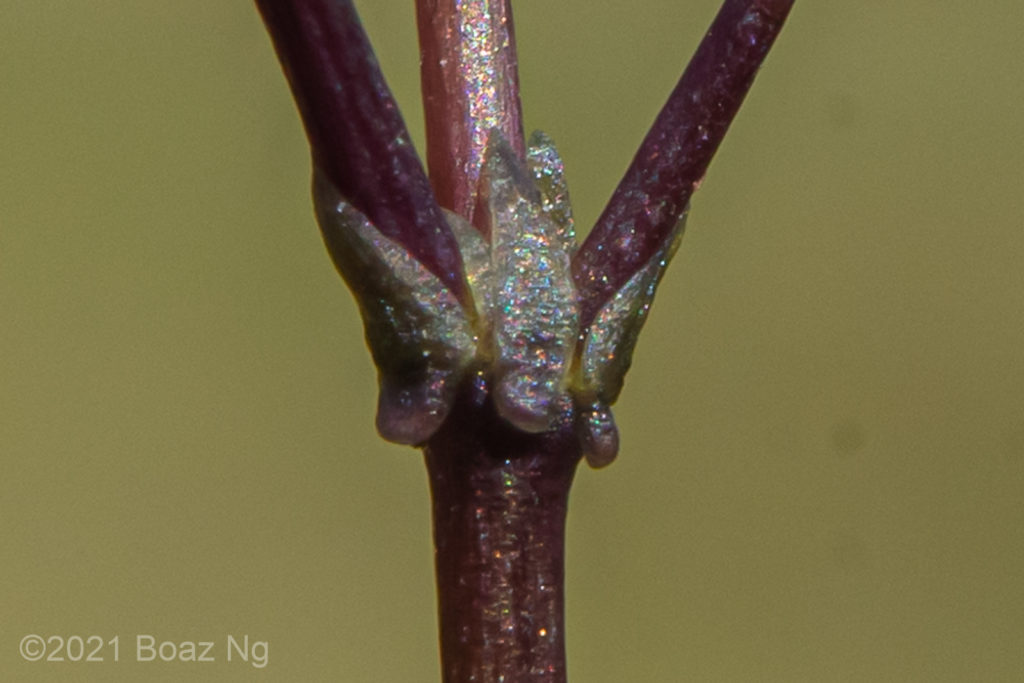
Plants within the Utricularia dichotoma species complex can be distinguished from other similar species by its bracts and bracteoles – the small leaf like structures where the flower stalk joins to the scape. Those of U. dichotoma are fixed at their base (as opposed to that of U. barkeri and U. grampiana, which are fixed to the stalk at the middle of the bract). Additionally, the base of the bracts are gibbous (rounded and bulbous) or have a downwards pointing spur. The bracts and bracteoles of Utricularia dichotoma subsp. dichotoma feature a spur that is rather broad at the apex and often quadrate (squarish) in shape.
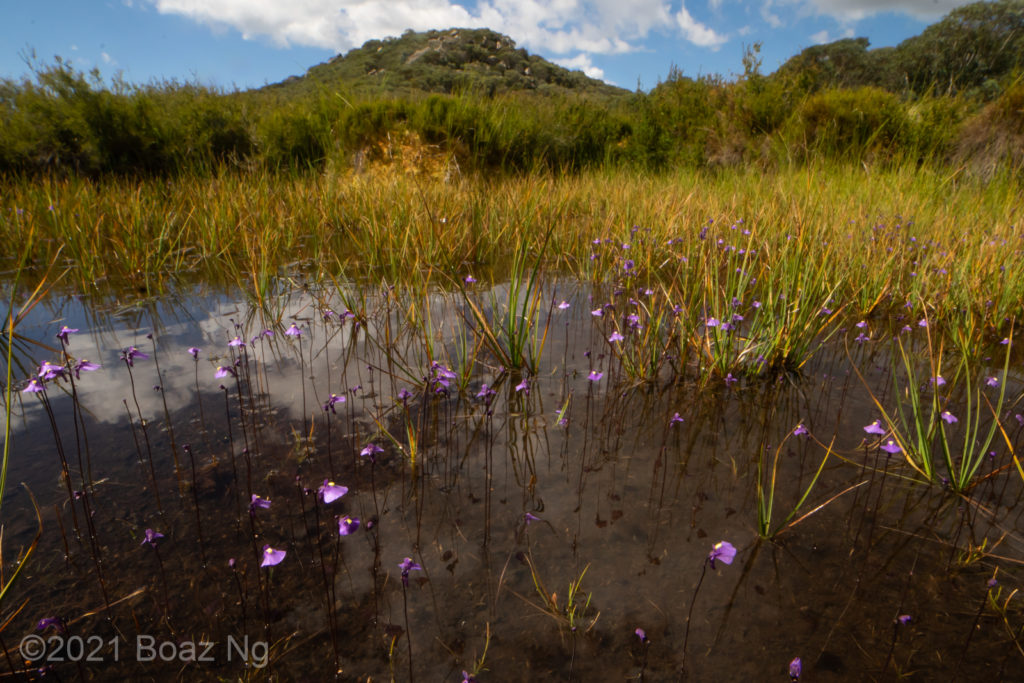
Utricularia dichotoma subsp. dichotoma is generally found in highland niches in Tasmania, Victoria and New South Wales. I observed the plants growing in a peaty substrate within a shallow creek on the Mt Buffalo Plateau.
